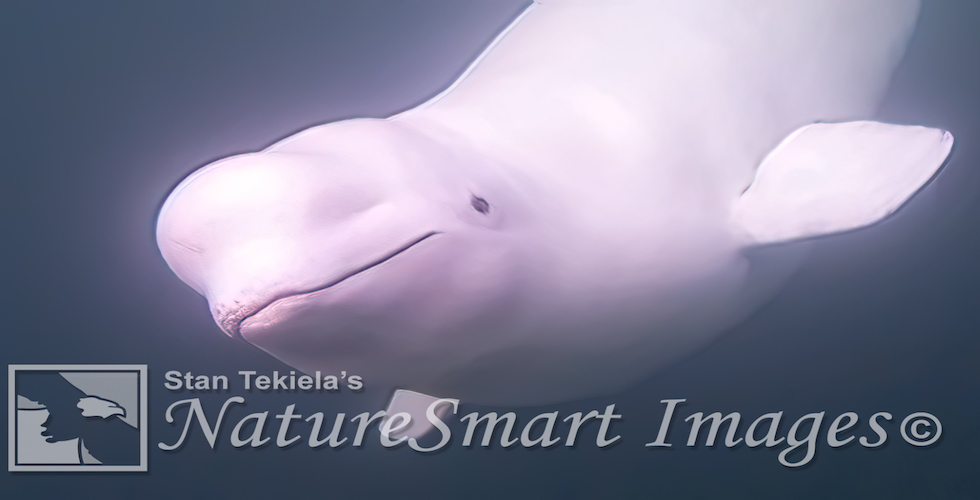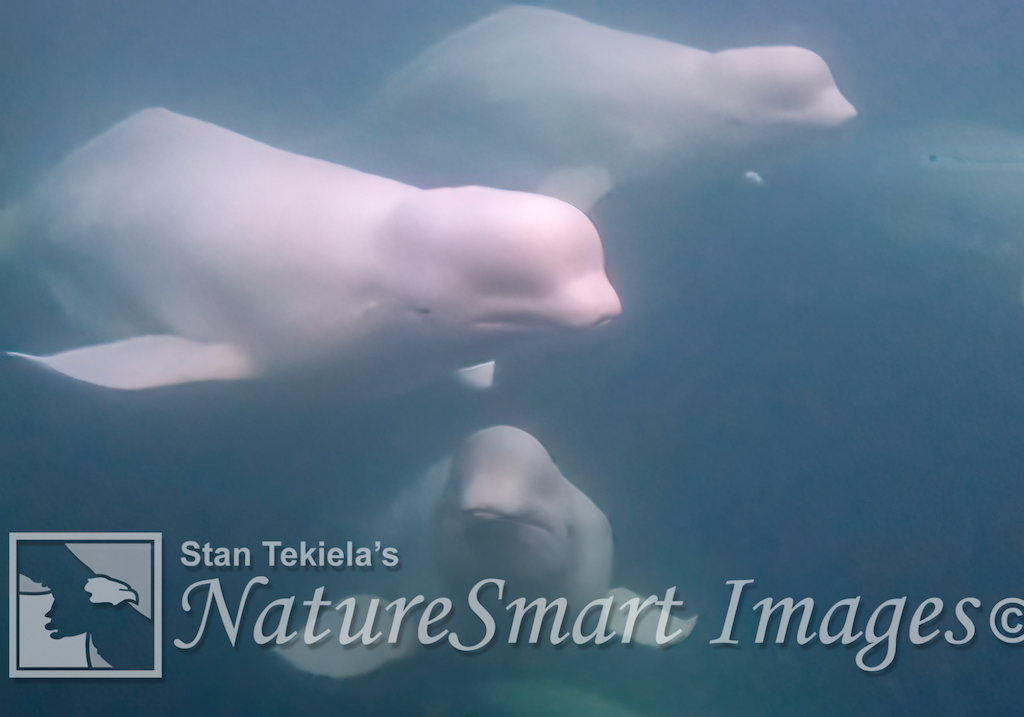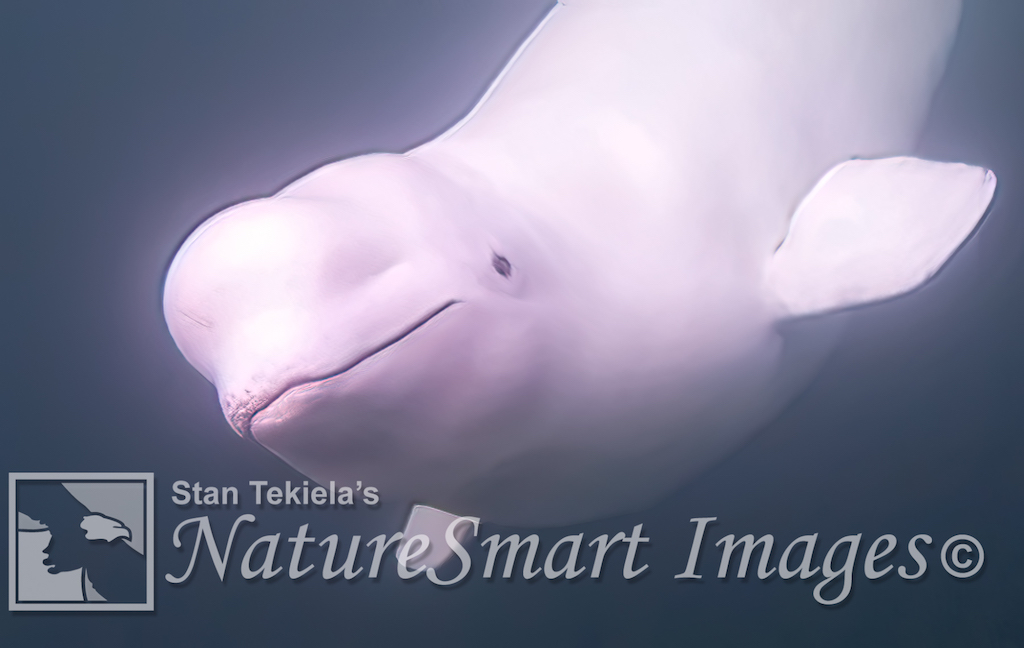
Stan Tekiela’s Encounter with Beluga Whales
When Stan Tekiela has traveled to photograph polar bears, he has always gone in the winter, when there has been snow on the ground. After all, capturing an image of polar bears in the snow is the quintessential goal. But when Stan went this last time, he traveled specifically during the autumn so that he could capture images of polar bears in the fall splendor. And there was a second reason he went at this time of year: The beluga whales (Delphinapterus leucas) would still be around. Here is his report.
Getting out on a small boat (zodiac) takes some planning, but more importantly, it takes good weather conditions. So I was keen to watch the weather during my time visiting the polar bears along Hudson Bay in northern Manitoba. There was just one morning when the wind wouldn’t be too much, and the skies were almost clear. If we had any chance of seeing the beluga whales, it would be this morning.

After a quick safety talk and putting on oversize PFDs (personal floatation devices), our group climbed into the zodiac and headed out into open water to see if we could find some beluga whales. These whales, a sub-Arctic and Arctic species, are very different looking from other whale species. They have a large bulbous head, which has led to another common name, Melon-headed Whale.
These aren’t very large whales. Males range 11-18 feet in length and weigh 2,000-3,000 pounds. The females are about 25% smaller than the males. As adults they are completely white or whitish-gray in color. The young are born dark gray or bluish gray. It isn’t until they are 7 to 9 years old that they obtain their full white color as adults. It is believed that the white skin is an adaptation to life in the Arctic that helps them to blend into the snow and ice surroundings.
The bulbous region on the head contains a compartment that houses the organ that they use for echolocation. Amazingly, they can change the shape of the “melon” on their head by blowing air around its sinuses to help focus the echolocation sounds they emit. In addition to the echolocation, the beluga whales are very vocal. We could clearly hear the pod of whales “talking,” even though we were in a small boat on the water’s surface. We could also hear the intense clicking of the echolocation.
To capture images of the beluga whales, I mounted my action camera to the end of a selfie stick. I would lean over the edge of the zodiac and plunge the camera down into the cold water. Since signals like Bluetooth don’t travel through water very well, I didn’t have a way to monitor what I was capturing with the camera. I would place the camera in approximately the spot I thought would work and then hope for the best.
At one point, a pod of beluga whales swam right up to our boat and approached within inches of my camera. I was so excited that I might be capturing some amazing footage. I was frozen in place, hanging over the side of the boat, just hoping everything with the camera was working, when suddenly the whale turned slightly to its side, which brought its eye upwards, and I locked eyes with this absolutely amazing creature just a couple of feet away. I nearly burst into tears with this personal one-on-one meeting.

I was stunned into silence for a moment. It was such a powerful connection and wonderful experience that I had to take a moment to just enjoy it and stop thinking about capturing images and video. I just watched the whales, which were now all around our boat.
Later, when reviewing the video, I could see that the whales would approach the underwater camera with such an inquisitive nature. They would look it over, and you could almost see them trying to figure out what the camera was and what to do with it. Some even put the action camera in their mouth but without damaging it.
But the best part was, when playing back the video, I turned up the volume and I could clearly hear the whales communicating with each other with loud squeaks and pops. In addition, I could hear the constant clicks of the echolocation. Watching the video brings me back to the edge of the zodiac and the amazing experience I had with these fabulous whales.
If you enjoyed Stan’s post, you may like one of his amazing nature books: Wild Birds, Backyard Birds: Welcomed Guests at our Gardens and Feeders, and Bald Eagles: The Ultimate Raptors.
You can follow Stan on Facebook and Twitter, or contact him via his web page. Stan’s nationally syndicated NatureSmart Column appears in more than 25 cities spanning 5 states (Minnesota, Wisconsin, Michigan, Illinois, and Pennsylvania) and is circulated to more than 750,000 readers.
For more stories about wildlife and nature, sign up for our newsletter now! #bewellbeoutdoors


